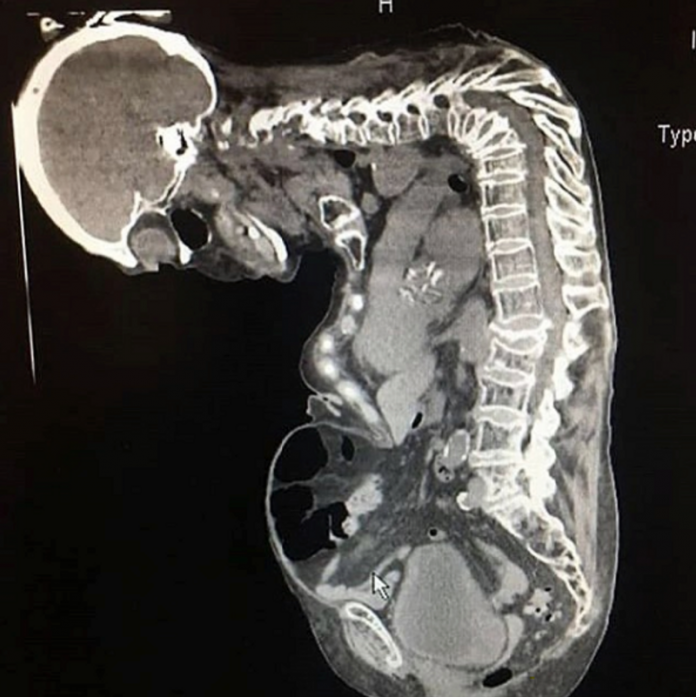A gibbus deformity is a disorder that results in sharp angulation because of structural thoracolumbar kyphosis. Kyphosis is a spinal disorder that causes an excessive outward cure of the spine, resulting in an abnormal rounding of the upper back. The condition is also sometimes referred to as “roundback” or if the curve is severe “hunchback”.
The condition is more common during adolescence, however, can occur that any age. Gibbus deformity is either congenital or acquired.
The image shows anterior collapse of one or more vertebral bodies which results in kyphosis and a very sharp angle. The deformity is generally found in the upper lumbar and lower thoracic vertebrae. Gibbus deformity causes one or more adjacent vertebrae to become wedged. The condition often develops in young children because of spinal tuberculosis or as a result of collapsing vertebral bodies because of osteomyelitis or spinal infection.
If left untreated, it can cause paraplegia and myelopathy because of spinal cord compression. Other possible causes of gibbus deformity in addition to tuberculosis include physical trauma to the spine, congenital condition, hereditary condition and pathological disease. It can also be a result of sail vertebrae, associated with, achondroplasia, mucopolysaccharidosis (MPS), cretinism (form of hypothyroidism in children). Most children with MPS also present with symptoms of gibbus deformity so it can possibly used for identifying the condition.
The hunchback is more easily seen when bending forward and viewed from behind. If the hunchback is of more than 70 degrees, it is an indication of the need for surgery and the surgery can be necessary for children even as young as 2 years of age. The reported average average age for surgery is 8 years. Patients with gibbus deformity often complain of stiffness and pain in the mid-back.
Treatment options for gibbus deformity require both antibiotics and surgical correction in case of the condition being caused by an infectious source. Surgical interventions include posterior instrument, fusion, interbody cage and corpectomy.




